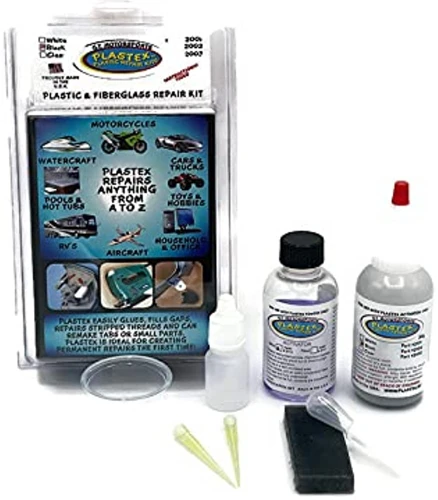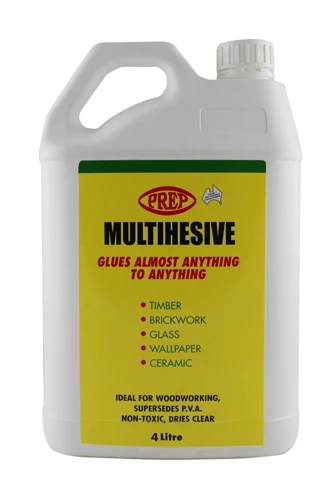Repairing plastic components of a vehicle can be a daunting task, especially when considering the strength and resilience required to withstand the rigors of driving. Gluing plastic car parts is an intricate process, involving a careful selection of adhesives and a meticulous approach to ensure long-lasting durability. This blog post provides a comprehensive guide to help enthusiasts and professionals alike navigate the world of automotive adhesives.
Understanding the Different Types of Automotive Glue
Diving into the realm of automotive repair, it’s essential to recognize the various adhesives tailored for different materials and applications.
Two-Part Epoxy Adhesives
Epoxy adhesives are renowned for their robust bond and chemical resistance, making them ideal for tasks requiring high strength. These adhesives come in two parts that, when mixed, create a powerful bond that can adhere to a variety of surfaces, including plastics commonly found in cars.
Cyanoacrylate (Super Glue)
Cyanoacrylate, commonly known as super glue, is another strong contender in the adhesive market. Its rapid bonding time is beneficial for quick repairs, but it is typically less flexible than other options, which may be a consideration depending on the application.
Specialty Plastic Adhesives
When dealing with plastic components, specialty plastic adhesives are specially formulated to create a strong bond with plastic materials, catering to the unique properties of these surfaces.
Selecting the Right Glue for Plastic Car Parts
The decision-making process for selecting the appropriate adhesive is crucial to the success of any repair.
Adhesion Properties: Plastic to Metal
When adhering plastic to metal, it is critical to select an automotive glue that can handle the different expansion rates and surface characteristics of these materials.
Strength and Durability Considerations
The strength and durability of an adhesive determine its suitability for automotive applications. High-stress areas require a glue that can cope with the demands of the road.
The Role of Surface Preparation
Adequate surface preparation can significantly influence the effectiveness of the bond. Ensuring the surfaces are clean, dry, and roughened (if necessary) is a key step in the process.
Step-by-Step Guide to Gluing Plastic Car Parts
For successful adhesion of plastic car parts, one must follow a systematic approach.
Preparation of Surfaces
- Clean both surfaces thoroughly.
- Dry the areas to be glued.
- Lightly sand if required to enhance adhesion.
Application of Automotive Glue
Apply the adhesive according to the manufacturer’s instructions, taking care not to use too much, which could weaken the bond.
Curing Time and Conditions
Allow the adhesive to cure fully, which may vary depending on the product and environmental conditions.
The Role of Gorilla Super Glue for Plastic Car Parts
Gorilla Super Glue has emerged as a reliable option for plastic car parts, offering an impressive balance of strength, cure time, and ease of use.
Comparing Top Brands of Automotive Glue
With numerous options on the market, comparing top brands of automotive glue is fundamental to making an informed decision.
Gorilla Super Glue Product Analysis
Upon analyzing Gorilla Super Glue, its features, such as its impact-resistant bond and quick set time, make it a popular choice for many repair tasks.
Other Leading Brands and Their Features
Other brands also offer unique features, such as flexible adhesives for areas requiring movement or temperature-resistant options for engine components.
Pricing and Value for Money
While the cost is an important consideration, the value for money becomes apparent in the long-term durability and performance of the adhesive.
Important Features of High-Quality Automotive Glue
Identifying the hallmarks of high-quality automotive adhesives is essential to achieving professional results.
Applicator Precision
Precision in application can make a significant difference, with some glues offering specialized nozzles or tips for accurate work.
Flexibility and Temperature Resistance
An adhesive that maintains flexibility and withstands temperature variations is critical for parts exposed to the elements and engine heat.
Weatherproof Capabilities
Adhesives that offer weatherproof bonds are paramount for exterior applications, ensuring the repair can handle moisture, UV exposure, and temperature extremes.
Professional Tips for Gluing Plastic Car Parts
Professionals often share valuable insights, such as testing the glue on a small area first or using clamps to hold parts together during curing.
Frequently Asked Questions (FAQs)
Answering common queries can further demystify the process of gluing plastic car parts.
How to Achieve the Best Bond Between Plastic and Metal
To achieve the best bond, ensure proper surface preparation, select the right automotive glue for plastic to metal, and follow the curing instructions closely.
What to Do If the Bond Fails?
If a bond fails, remove the old adhesive, reassess the surface preparation and adhesive choice, and attempt the repair again.
How to Remove Excess Glue from Car Parts
Excess glue can be removed with careful application of solvents or by gently scraping it off, taking care not to damage the surfaces.
If you’re tackling a DIY project and need to know the ins and outs of gluing plastic materials, our blog has you covered. For car enthusiasts looking to fix up their vehicles, we have a comprehensive guide on How To Glue Plastic Car Parts that can help you with your repairs. And if you’re working on other projects, we also have resources on how to glue plastic bottles together, as well as tips on how to glue body repair panels. For those interested in outdoor projects, don’t miss our article on how to glue composite decking to ensure a durable and aesthetically pleasing finish.
Concluding Thoughts on Gluing Plastic Car Parts
Mastering the art of gluing plastic car parts is achievable by understanding the properties of different adhesives, selecting the right product, and applying it with precision and care. With the right approach, your repairs can be as resilient as the parts themselves.



